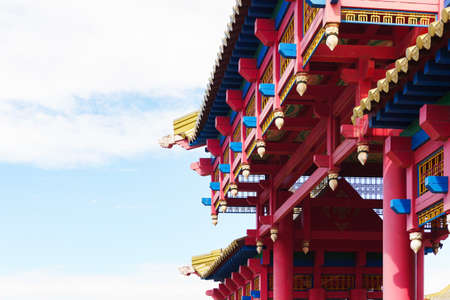1. Understanding the Red Envelope Tradition
When you hear about feng shui, you might picture rearranging furniture or adding certain colors to your home. But have you ever wondered why the red envelope is such a big deal in Chinese culture and feng shui? Let’s break down where this tradition comes from and how it’s used.
The Cultural Roots of the Red Envelope
The red envelope, also known as “hongbao” in Mandarin or “lai see” in Cantonese, is a small packet filled with money. Its bright red color symbolizes good luck, happiness, and protection against evil spirits in Chinese culture. The tradition dates back centuries and is deeply woven into both everyday life and special occasions.
Red Envelope Uses in Chinese Celebrations
| Occasion | Who Gives It? | Who Receives It? | Purpose |
|---|---|---|---|
| Lunar New Year | Parents, elders | Children, younger family members | To bless with luck and prosperity for the coming year |
| Weddings | Guests | Bride and groom | To wish happiness and financial security to the couple |
| Graduations/Birthdays | Family, friends | The graduate or birthday person | To celebrate achievement or milestone with good fortune |
| Special Occasions (business openings, baby showers) | Well-wishers | The host or recipient of honor | For luck, growth, and success in new ventures or life stages |
The Role of Red Envelopes in Feng Shui Practice
You may not realize that red envelopes also play a unique role in traditional feng shui consultations. When seeking advice from a feng shui master, it’s common practice to offer payment or gratitude inside a red envelope. This isn’t just about money—it’s believed that using a red envelope creates an energetic shield, protecting both the giver and receiver from negative energy while exchanging knowledge or blessings.
Key Takeaway:
The red envelope is more than just a decorative packet; it’s a meaningful symbol of luck, gratitude, and protection. Whether at festive events or within the world of feng shui, its use connects people through positive intentions and cultural heritage.
2. Symbolism and Meaning Behind the Red Envelope
When it comes to feng shui, the red envelope—often called “hongbao” in Chinese culture—is much more than just a decorative packet for gifting money. In the United States, red envelopes are most commonly seen during Lunar New Year celebrations, weddings, or even as part of certain business exchanges. But what’s really inside the tradition? Let’s dive into what makes this small red packet so powerful in feng shui practice.
Why Red? The Power of Color in Feng Shui
Red is not just a bold color—it’s considered one of the luckiest colors in feng shui. In Chinese culture and across many Asian-American communities, red symbolizes energy, happiness, good fortune, and protection from negative forces. When you hand someone a red envelope, you’re not only giving them a gift but also sending blessings and positive energy their way.
Color |
Symbolic Meaning in Feng Shui |
|---|---|
| Red | Luck, prosperity, joy, protection |
| Gold (often paired with red) | Wealth, success, abundance |
| White (rarely used for envelopes) | Mourning or loss (generally avoided) |
The Envelope: More Than Just Money Inside
The red envelope is traditionally used to pass on money as a symbol of good wishes and blessings. But its true value lies beyond the cash inside. In feng shui practice, especially in the U.S., these envelopes are sometimes used to transfer wisdom or secrets from a teacher to a student or to express gratitude and respect in business relationships. The act itself creates positive energy flow between people.
Modern Uses of Red Envelopes in America
- Lunar New Year: Given to children and unmarried adults to bring luck for the new year.
- Weddings: Shared with newlyweds to wish them happiness and prosperity.
- Business: Used as tokens of appreciation or as part of ceremonial openings.
- Feng Shui Cures: Placed in homes or offices to invite wealth and ward off negativity.
Did You Know?
In American-Chinese communities, people often personalize red envelopes with messages or their own artwork—making each one unique while still honoring ancient traditions!
![]()
3. Modern Interpretations in American Feng Shui
Feng Shui has traveled far from its roots in ancient China, finding a new home and fresh interpretations in the United States. The red envelope tradition, once strictly practiced by Feng Shui masters as a way to honor knowledge exchange and protect energetic boundaries, has evolved to fit the unique culture and lifestyle of American audiences.
How the Red Envelope Tradition is Adapted in America
In traditional Chinese Feng Shui, red envelopes are used to show respect when receiving teachings or consultations. In America, this practice has been reimagined in several ways to make it more accessible and meaningful for Western clients. Here’s how:
| Traditional Chinese Practice | American Adaptation |
|---|---|
| Physical red envelopes with cash or coins | Red envelopes with checks, gift cards, or even symbolic notes of appreciation |
| Strict use only during formal Feng Shui teachings | Used in workshops, online courses, and casual consultations |
| Focus on energetic protection and gratitude | Emphasis on cultural respect, mindful giving, and positive intention |
| Exclusively red color symbolizing luck and energy | Sometimes replaced with other auspicious colors or digital “envelopes” for online payments |
Why Do Americans Still Use Red Envelopes?
The core meaning remains: giving a red envelope is a gesture of respect and thanks. However, American practitioners often explain the tradition in relatable terms—such as setting healthy boundaries around professional advice or expressing gratitude for shared wisdom. This helps clients feel comfortable participating, even if they’re unfamiliar with Asian customs.
The Red Envelope in Today’s Feng Shui Consultations
Many Feng Shui consultants in the U.S. offer clients the option to present a red envelope at the end of a session. Some even encourage clients to write intentions or blessings inside, making the act both personal and powerful. Others accept virtual “red envelopes” through payment apps, adapting the ritual for convenience while keeping its spirit alive.
A Blend of East and West
The modern American approach to the red envelope myth shows how traditions can evolve while honoring their origins. By making small adjustments, practitioners keep the practice relevant without losing its deeper meaning. Whether you choose a classic red envelope or a digital version, what matters most is the intention behind it: gratitude, respect, and positive energy flowing between teacher and student.
4. Debunking Common Myths
When it comes to red envelopes in Feng Shui, there’s a lot of mystery and even more misinformation—especially as the tradition travels from Asia to America. Let’s clear up some of the most common myths and misunderstandings so you can appreciate what red envelopes really mean, wherever you are.
Myth vs. Fact: Red Envelopes in Feng Shui
| Myth | Fact |
|---|---|
| Red envelopes must always contain money for good luck. | In traditional Feng Shui, red envelopes can carry anything symbolic—not just money. The color red itself is believed to ward off bad energy and invite good fortune. |
| You have to use red envelopes only during Chinese New Year. | While popular during Chinese New Year, red envelopes are also used for other special occasions like weddings, birthdays, or when receiving Feng Shui advice—anytime you want to give a blessing. |
| Only older people can give red envelopes to younger people. | Anyone can give a red envelope as a gesture of goodwill, regardless of age or status, especially in American contexts where traditions adapt and blend. |
| The power of the envelope is lost if you buy them online or at a store. | The intention behind giving matters most. It’s okay to purchase envelopes anywhere—what counts is your sincerity and respect for the tradition. |
American Adaptations: What Changes?
In the U.S., many people enjoy the fun and symbolism of red envelopes without strictly following every custom. For example:
- It’s common to use playful designs or even DIY red envelopes for holidays and parties.
- People may include gift cards, heartfelt notes, or small tokens instead of cash.
- Non-Chinese families sometimes adopt the practice as a way to share blessings with friends and neighbors.
The Heart of the Tradition
No matter where you live, the real meaning behind the red envelope is about sharing positive energy, kindness, and well wishes. Whether you follow every tradition to the letter or give it your own twist, understanding the facts helps keep this beautiful practice alive—and meaningful—for everyone.
5. Practical Tips: Using Red Envelopes for Positive Energy
Why Use Red Envelopes in Your Daily Life?
Red envelopes, or “hongbao,” are more than just festive wrappers for cash gifts in Chinese culture. In Feng Shui, they’re powerful tools to attract positive energy, prosperity, and harmony into your space. Even if you live in the U.S. and don’t follow every tradition, you can still use red envelopes to boost good vibes at home or work.
How to Incorporate Red Envelopes Into Your Home
1. Place Red Envelopes Strategically
Choose places where you want to invite abundance and protection—think entryways, wallets, office desks, or your wealth corner (the southeast area of your home according to Feng Shui). Here are some easy ideas:
| Location | Purpose | What to Place Inside |
|---|---|---|
| Front Door (behind a picture or décor) | Attracts positive energy as you enter/leave | A few coins or a wish note |
| Wallet or Purse | Symbolizes financial luck on the go | $2 bill, lucky penny, or affirmation card |
| Desk Drawer at Work | Boosts career luck & smooth workdays | Business card, goal list, small crystal |
| Southeast Corner of Living Room | Activates wealth & prosperity area | A dollar bill or gratitude note |
2. Use Red Envelopes During Special Occasions
You don’t need to wait for Lunar New Year! Give a red envelope with a thoughtful note or small amount of money during birthdays, graduations, housewarmings, or even when someone starts a new job. It’s a meaningful way to share blessings and positivity.
3. Personalize Your Red Envelope Rituals
- Add affirmations: Write your goals or wishes on a slip of paper and place it inside the envelope.
- Select meaningful symbols: Add small charms like lucky coins, crystals, or inspirational quotes.
- Refresh often: Change out the contents seasonally or whenever you set new intentions.
Cultural Tips for Americans Trying Feng Shui Traditions
No need to follow every rule perfectly! Use red envelopes in ways that feel comfortable and natural for you. The main point is positive intention—believe that good things are coming your way, and let the red envelope serve as your daily reminder.


